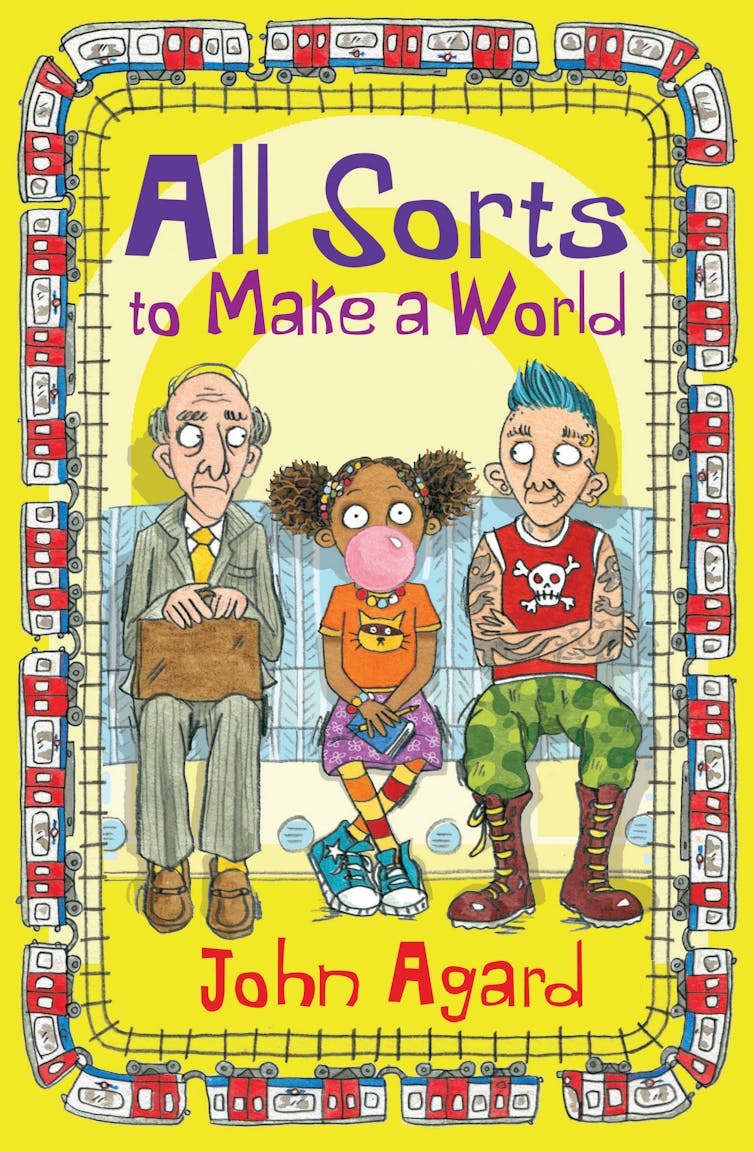
Cuddling up in a big chair with a good book, either with a familiar adult reading to you or starting the first chapter of a book on your own is a fundamental part of childhood – emotionally as well as intellectually. Reading about people who are like yourself affects both your self-image and the likelihood you will enjoy reading. Becoming a habitual reader, in turn, affects your life options. Reading about people different from yourself also encourages empathy and cultural understanding.
But if the world of children’s books doesn’t include people who look like you, it is difficult to feel welcomed into reading, as the writer Darren Chetty, among others, has pointed out. And recent research suggests that child readers, especially, but not exclusively, readers of colour, are being seriously shortchanged.
Pigeonholed or sidelined
There simply aren’t enough authors and illustrators from diverse backgrounds being published, as academic Melanie Ramdarshan Bold pointed out in the 2019 Book Trust report on representation of people of colour among children’s book authors and illustrators. In fact, between 2007 and 2017, fewer than 2% of children’s book creators were British people of colour.
Authors of colour often feel isolated within the publishing industry. They are frequently encouraged to focus on racism and similar problem narratives, a recent report from Arts Council England (ACE) found. They do not have the freedom (as many white British authors do) to write across the broad spectrum of children’s literature genres if they want to be published.
While about a third of school-age children come from a minority ethnic background, the Centre for Literacy in Primary Education found that only 7% of children’s books published in Britain in 2018 had a Black, Asian or minority ethnic character. With so few diverse children’s books being published, these books are deeply important.
When characters of colour appear in children’s books, they are rarely the protagonist with the agency to effect change. Recent books sometimes still depict characters of colour as “sidekicks” who support and affirm the white main character. Other times, the “diversity” in a book appears in the background only.
Characters are defined by their colour, which makes them irreconcilably “other”. Descriptive words of character features compare them to food or animals. Sometimes characters appear early on in a narrative, only to quickly disappear in favour of a refocus on the white character. These techniques can dehumanise people of colour.
Children’s nonfiction, including history and science, either ignores contributions of people of colour to British society or pigeonholes particular ethnic groups into certain spaces only – such as the history of British slavery (and very specifically not the history of Afro-Caribbean uprisings against British slavery).
In a single children’s book, this “sidelining” of people of colour may not matter. However, when it is the enduring norm, as Nigerian writer Chimamanda Ngozie Adichie stressed in her 2009 Ted talk on the danger of a single story, it situates readers of colour on the sidelines, too. This affects the reader’s perception of who matters in books.
Working together for representation
While it would be easy to suggest that the problem lies with the British publishing industry alone, this is too simplistic. All people involved with children’s books need to participate in changing the narrative so that the books being published better represent the population and encourage all children to become readers, according to the ACE report.

Michael Broad/Barrington Stoke, Author provided (no reuse)
This can be done in a variety of ways, and involves committed effort. Seven Stories, the National Centre for Children’s Books, began dedicating some of its collecting efforts to culturally diverse children’s literature in 2015. This has resulted in the acquisition of materials relating to children’s books by the Guyanese-born British poets John Agard and Grace Nichols in 2019. The acquisition of diverse materials by a national museum is one way of indicating the importance of this material to Britain and to British children’s literature.
Another way of highlighting the critical importance of including all children in children’s books is through awards. The longest-running children’s book prizes, the Carnegie and Kate Greenaway Medal, have never been awarded to a British author of colour. Following the commissioning of a diversity review of the Carnegie and Kate Greenaway Medal, the Chartered Institute of Library and Information Professionals (CILIP) revised the judging criteria for the annual prizes. These new guidelines ask judges to consider representation within books as they are making selections. Other children’s book prizes, including the Little Rebels prize, focus on children’s literature that challenges the status quo in areas such as diversity.
These efforts, large and small, bring attention to children’s books with characters of colour that might otherwise slip under the book-buying public’s radar. And getting librarians, educators and parents, no matter what their ethnic, racial or cultural background, to buy books is critical.
Publishing is a market-driven industry. If books aren’t selling, publishers can make the case that there is no audience and therefore they do not need to publish more books with characters of colour. All children need to feel welcome in the book world, and all children need to understand the diversity of British society now and throughout history.






